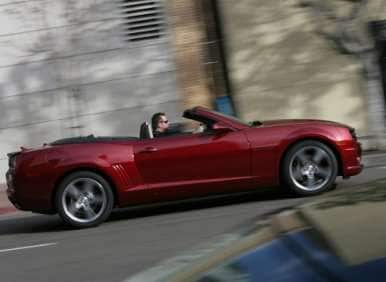Recent Articles
Popular Makes
Body Types
2013 Chevrolet Camaro Convertible 2LT Road Test & Review
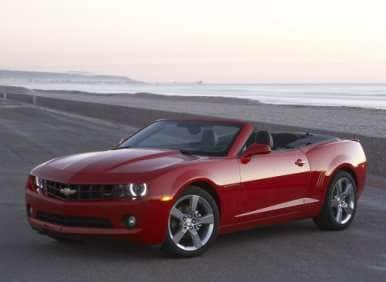
If you were the sort of kid who liked to put firecrackers in mailboxes just to create mayhem, here’s the online equivalent of sticking a firecracker in a mailbox. Log into any Camaro Internet forum and start a thread asking what the word “Camaro” means. Then sit back and watch the explosion of insults fly, as know-it-all after know-it-all declares their interpretation of the meaning of the word to be the one.
Of course, that’s assuming you got nothing better to do with your time than read about cars on the Internet…
Oh, wait; you’re doing that right now—aren’t you? :^D
Seriously though, that people get so engaged around this topic is testament to the passions surrounding Chevrolet’s voluptuous pony car. For the record, there are many varying opinions. The word lines up pretty closely with a French word meaning “friend, or companion”. And, of course, there’s the famous quote often attributed to Pete Estes, Chevrolet’s general manager at the time the Camaro was introduced in 1967;
“Camaro is a small vicious animal that eats Mustangs.”
For 2013, a number of improvements were made to the Camaro, which should enable it to satiate its appetite for Mustangs (and Challengers) more readily than ever. Our test car, a Summit White 2LT convertible was a real head turner, outfitted in the livery of the 1969 Indianapolis 500 Pace Car (without the lettering—thank God). The combination of the bold orange stripes with the brilliant white paint and the orange leather interior proved to be a real retina arrester
2013 Chevrolet Camaro Convertible 2LT Road Test & Review: Models & Prices
Available in a number of different iterations, Chevrolet’s Oshawa, Ontario, Canada-built Camaro offers three different engines (soon to be four), two different transmissions, and two different body styles, for a number of possible configurations—depending upon your mix of body, engine, transmission, trim level, and packages.
For 2013, the 2LT Camaro Convertible’s base price is $34,335, plus a $900 destination charge. The LT designation means it runs Chevrolet’s 3.6-liter V6 engine. Camaro Convertible models equipped with this engine are offered in both 1LT, and 2LT trims.
A set of 18-inch alloy wheels supports 1LT models as standard equipment. Foglamps, eight-way power seats, automatic headlights, cruise control, keyless entry, air-conditioning, a tilt-and-telescoping steering wheel, Bluetooth, OnStar, and a six-speaker CD/satellite-based sound system with an auxiliary audio input jack round out the package.
The 2LT Camaro features all of those items in addition to 19-inch alloy wheels, heated mirrors, and an auto-dimming rearview and driver-side mirrors. A rallye gauge cluster on the center console, along with a head-up display, rear park assist (standard on all convertible models), and a rearview camera are components of the 2LT package as well. Rounding the kit out are heated front seats, and leather upholstery. For 2LT Camaros, the 1LT’s six-speaker audio system is supplanted by a nine-speaker Boston Acoustics sound system (which is available as an option for 1LT Camaros).
Camaro’s Convenience and Connectivity package embeds an iPod interface and a leather-wrapped steering wheel with audio controls. If you order the optional automatic transmission, it also adds remote start. To get a set of 20-inch wheels and xenon headlights, opt for the RS package.
Our test Camaro Convertible benefited from Chevrolet’s $500 Interior Accent Trim Package. With it, the black interior was embellished with Inferno Orange accents on the front and rear seats, as well as orange stitching on the steering wheel, shift knob, armrests, center console, and seats.
The $1375 RS package laced our Camaro with high intensity discharge headlamps and LED daytime running halo rings, in addition to 20-inch Midnight Silver painted aluminum wheels.
The optional automatic transmission added $1,185 to the Camaro’s bottom line, but it also endowed the convertible pony car with remote start and tap shifting for manual control of the automatic transmission.
Capping the package off was the $470.00 orange stripe package. Figuring in the $900 destination charge makes the 2013 total as tested price of our Camaro $38,865.
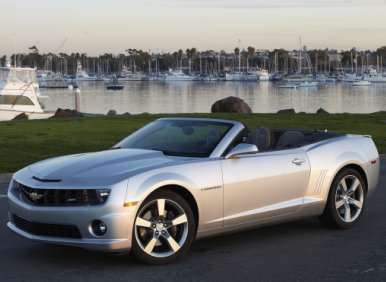
2013 Chevrolet Camaro Convertible 2LT Road Test & Review: Design
Camaro Convertible’s soft-top is capable of stowing itself or deploying itself within 20 seconds. This means if you roll up to a traffic signal just after it goes red, you’ll have more than enough time to lower the top and still be able to check the envious stares of the other drivers at the signal after pulling off that smooth move.
Since it folds in a Z pattern, the outside of the top protects the headliner when the top is retracted. A tonneau cover is offered, but it’s really a pain to use. Given the top folds flush with the body of the Camaro when it’s down, that cover is almost irrelevant though.
Raised, the top’s line blends nicely with overall design of the car, making the Camaro Convertible one of the rare droptops that looks good with the top up too. A glass rear window and an acoustical headliner keep the car quiet when the top is in place. The rear window is also equipped with a defogger to aid visibility in inclement weather.
The Camaro was designed from the onset with a convertible variant in mid, so its structure is not compromised by the fact the top can be opened. This also enabled some clever packaging of the antenna arrays modern cars employ. For the Camaro Convertible, Chevy engineers hid the radio antenna in the tail spoiler of RS package cars. The satellite radio uses a shark-fin type antenna mounted on the rear deck lid. For the models without a rear spoiler, the terrestrial antenna is hidden in the center of the deck lid.
Speaking of the rear deck lid, in order to clean up the appearance of the rear of the car, the trunk’s cylinder lock was moved from the panel between the taillamps where it resides on the coupes, to inside the car between the rear seat back cushion and driver’s side interior panel. And, of course, the keyless remote fob also opens it.
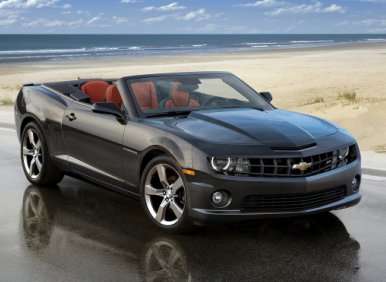
2013 Chevrolet Camaro Convertible 2LT Road Test & Review: Comfort & Cargo
Inside the Camaro Convertible, with the top raised, you’d be hard pressed to tell you’re even in a convertible. The top is finished just that nicely. A single latch secures the top to the windshield frame, making its operation a much simpler process.
One of the knocks against the Camaro’s design is outward visibility, and with the top raised it’s an issue on the Camaro Convertible too. This is why Chevy pairs a rear-view camera with the soft top.
Another knock against the Camaro is the relative lack of comfort of its back seat. Yes, we know, it’s a pony car — most often occupied by a driver and one lucky passenger. However, there are times when the back seat will be called into play and here, Ford’s Mustang affords that occasion more concern. The Camaro’s trunk has a rather small opening and is a bit on the shallow side at 10.2 cubic feet. This dearth of space is exacerbated by the convertible roof’s tonneau cover, which lives in the trunk when it isn’t deployed.
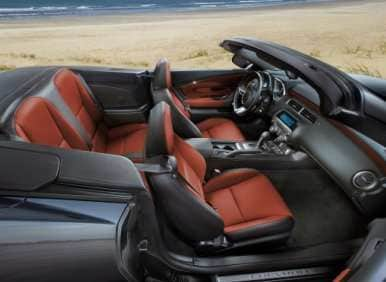
2013 Chevrolet Camaro Convertible 2LT Road Test & Review: Features & Controls
As much as we appreciate the retro-inspired exterior styling of the Camaro, the similarly influenced interior brought a rather significant flaw from the 1967 Camaro into the 21st century. We’re referring to the placement of the four auxiliary gauges on the center console, tucked up near the bottom of the dash. In our estimation, any gauge requiring a driver to take their eye completely off the road and look down into the depths of the interior of the car to glean its information is pretty much useless.
Yes, we know this was hip in 1967, but in 2013, it’s just plain poor ergonomics. Particularly when one considers the broad swath of the empty trim panel to the right of the steering wheel where those gauges would’ve looked really nice.
On the other hand, we like the look and the intuitiveness of the new Chevrolet MyLink touchscreen audio system fitted to LT, SS and ZL1 Camaros. Capable of interfacing with smartphones, it enables control of audio apps like Pandora and Stitcher, while also accommodating Bluetooth audio streaming from your mobile device.
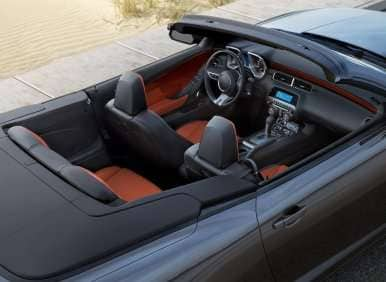
2013 Chevrolet Camaro Convertible 2LT Road Test & Review: Engine/Fuel Economy
The 2013 Chevrolet Camaro Convertible 2LT is fitted with GM’s 323-horsepower, 3.6-liter V6. The engine delivers 278 ft-lbs of torque and with a six-speed automatic transmission the EPA says the powertrain is good for 18 miles per gallon in the city and 29 on the highway (17 and 28 with the manual transmission).
The engine’s forged steel crankshaft makes it especially robust, while the 24-valve cylinder heads incorporate dual overhead camshafts and infinitely variable cam phasing. These enhancements give the engine solid low-end torque for brisk acceleration and exceptionally long legs for relaxed high speed running.
Acceleration off the line with the V6 is adequate, if not exactly exceptional, but the exhaust note leaves a bit to be desired, particularly after you’ve sampled, say, the Infiniti G37’s sonorous powerplant. We imagine it might be better with the manual transmission, but it just doesn’t possess that sophisticated sound the best sporting-oriented V6 engines emit.
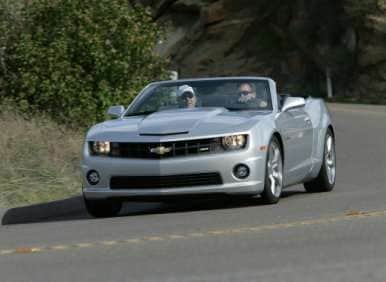
2013 Chevrolet Camaro Convertible 2LT Road Test & Review: Driving Impressions
Around town, on the highway, and in less athletic situations, the Camaro rides smoothly, is reasonably quiet (for what it is) and is more than capable of holding its own merging into fast moving highway traffic.
However, as much as we like the Camaro, size is its Achilles Heel. The car is just too big to really enjoy blasting along an open mountain road—which is where we enjoy pleasure driving the most. Now, this is not to say the Chevy isn’t agile, every Camaro model possesses a significant amount of agility.
Further, despite the Camaro’s size, cornering and braking can be accomplished with considerable verve. Steering is quite responsive if not exactly communicative in terms of the feedback it transmits to your fingertips. Body roll is minimal, as are dive and squat, so the Camaro feels competent when it’s asked to perform feats of high performance.
It’s just the size thing really cuts into the confidence you can entrust to the car. Once you’ve driven it for a while and know exactly how wide it is, that feeling would probably pass. But driving an unfamiliar Camaro briskly over a twisty road is an exercise requiring a certain degree of prescience.
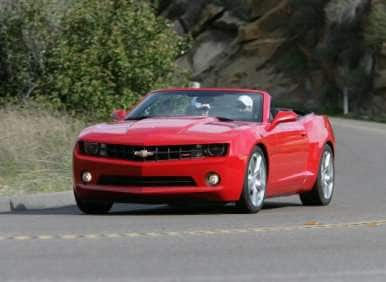
2013 Chevrolet Camaro Convertible 2LT Road Test & Review: Safety/Ratings
All Camaro models come with antilock disc brakes, stability control, front-seat side airbags, full-length side curtain airbags, and OnStar—all as standard equipment.
Other key safety features include:
: A rearview camera system to complement the rear park assist feature.
Electronic stability control system helps reduce the risk of rollover crashes by keeping the vehicle in the driver’s intended path by applying throttle, braking or a combination of both.
Minimize forward movement during a collision, and are standard on the front safety belts. Load-limiting retractors cinch the belt more tightly.
Child seat attachment system is included in all second-row seating positions.
: Standard on all models.
(RKE): Also provides a second function for the red panic button. Drivers can use it to locate the car without sounding the panic alarm.
NHTSA awarded the Camaro five stars in both front and side impact protection.
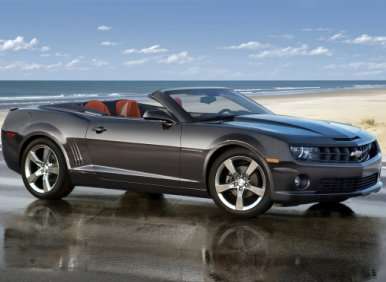
2013 Chevrolet Camaro Convertible 2LT Road Test & Review: Final Thoughts
There’s a reason every parade includes at least one Camaro Convertible. Few other cars can match the presence the droptop pony car brings to any situation. Fluidly beautiful and retro-yet-contemporary, the Convertible Camaro pushes a lot of the right buttons.
If you’re new to high performance driving, or if this is your first sporting oriented car, you’ll probably be quite impressed with its capabilities. And frankly, even seasoned drivers will find the Camaro a willing accomplice at high-speed hi-jinx. But if you’ve driven a lot of fast cars, and better still, a lot of really good fast cars, the Camaro’s flaws will reveal themselves rather quickly.
If the car were about 30 percent smaller, but still had all the power and conveniences it offers, we’d have universal praise for the Chevrolet. As it is, we can only say while you probably won’t be disappointed about the way the car goes, there are a number of more driver-satisfying V6-powered performance cars out there.
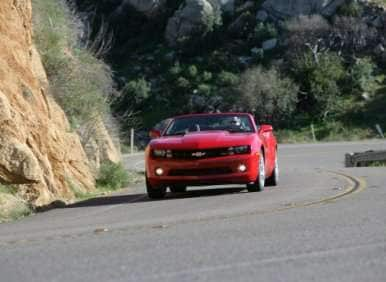
2013 Chevrolet Camaro Convertible 2LT Road Test & Review: Pros & Cons
• Delightful good looks (top up or down)
• Spirited performance
• Broad array of standard features
• It’s a Camaro—enough said
Too big
• Compromised outward visibility with the top raised
• Awkward back seat
